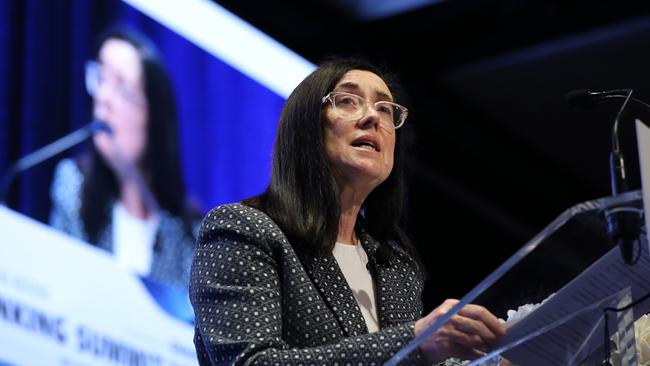Welcome step but Chalmers misses the main game


To his credit Chalmers has in the works more substantive reforms on competition policy in potentially the biggest changes for 31 years, but is strangely muted on the subject.
Given the slow growth in the economy and cost of living pressures one might think the government would be shouting competition reform (as opposed to an overdue tweaking of competition law) from the rooftop, but it’s perhaps because competition reform is not an ACTU favourite.
Chalmers may be the best spokesman this government has but as an alternative leader he also knows the power of union support.
In terms of future-facing competition law, the government has failed to do more than endorse the ACCC’s recommendations on pressing digital platform regulation with Chalmers last December, 18 months after receiving the recommendations, sending them to Assistant Treasurer Stephen Jones’s office for more consultation, which is akin to a reform death sentence.
If Chalmers wants to bring the ACCC in line with its OECD peers then better digital enforcement powers through ex ante regulation via company codes of conduct is a no-brainer. Just when US courts are intervening to force Google to open access to external app finances, the Australian regulator is hamstrung.

This said, compulsory notification of mergers is a significant albeit belated step, boosting the ACCC’s powers in determining mergers, with the courts sidelined to an extent.
This move to an administrative regime is a significant one, endorsing ACCC chief Gina Cass-Gottlieb’s team’s skills. It will also be a bonanza for competition lawyers, known in the trade as the mafia.
The notification thresholds are so low (though not as low as the ACCC wanted) just about every deal will be caught, and while the regulator will be able to tick the box on most mergers, it has increased power aided by control of the time clock.
The $360m ACCC annual budget this week got another $30m over three years to chase supermarkets and $56m, likely also over three years, to handle the expected flood of merger notifications. In all, an increase of 6 per cent a year on the regulator’s reckoning.
It’s a bit more complicated, with funding due to drop off as the digital platform program ends next year, as with the supermarkets inquiry.
The compulsory notification powers come with increased transparency because now every deal notified will be on the public record, as with the reasons for the ACCC’s decisions, which opens the door for everyone to see what it thinks.
The downside is Chalmers has also given himself extra powers to designate merger coverage, as now with supermarkets, which is a dangerous incursion across the line in directing a politically independent regulator. Practically this mightn’t be a huge step but now it’s proposed to legalise the political incursion.
In the US the regulator needs to go to court to stop a merger, but under the new law now in Australia the merger parties must wait for the ACCC to speak and then take any challenge to court.
No merger can proceed without an official tick.
Importantly, the merger parties will be able to take new information to the court to support their case, whereas now they can’t.
This was a concession from the regulator, which wants to ensure affected parties have some anonymity in commenting on proposed deals.
While the BCA claims victory over dropping the market share test for the notification threshold, this doesn’t mean much, given the lower monetary thresholds, and when deals are assessed market share will still be a key factor.
More private company deals will be covered by an across-the-board 20 per cent control threshold which applies in the Corporations Act as signalling a change in control.
The new elements to the actual merger powers include measures to stop deals that “entrench” market power and to stop creeping acquisitions.
If a big supermarket buys a corner store this will be assessed against the backdrop of other recent deals, which may amount to more than a hill of beans.
The new entrenched power provisions can stop a company buying in an allied market which boosts its power. Examples include Pacific National buying the Queensland Acacia rail terminal, which while a separate market gave it increased market power on the Sydney to Brisbane run.
Likewise Woolworths buying a food service company gives it more control over the same suppliers, or buying a pet food company increases its retail strength.
Notably the law stops acquisitions, not organic expansion, so there is nothing wrong with creating a pet food aisle without buying the supplier.
The new laws are not due to start until 2026 but voluntary notifications can start from the middle of the year.
Chalmers has delivered on merger reform at a convenient time, given the role the ACCC is playing in bashing supermarkets, but it is playing catch-up when what is really needed is some forward-thinking national competition reform.
The reforms needed are in the government sector, health and education. In health, the aim is to make the system patient-centric rather than provider-centric.
Technology is helping, but governments need to flick the switch to better targeted user pricing on roads, which would help boost cities by keeping cars out, and also negating the free ride that electric vehicles now enjoy.
Capital buffer
Few can watch Hurricane Milton’s devastation in the US and wonder what is happening.
Pollination boss Martijn Wilder’s call this week for banks to be required to hold a natural capital buffer in proportion to their environmentally risk-weighted assets to increase the pool of capital to offset Australia’s destruction of biodiversity makes eminent sense.
The banks won’t act unless forced to, as shown by the reaction of one of the big business banks this week to revenue-contingent loans: “What’s in it for us?” What is in it is sustainable farmland and better protected capital.
As noted last week there is a case for policy to back more indigenous farm managers to harvest more sustainable agriculture.
Chris Andrew, an enterprise adviser to the Waluwin Foundation, Paul Girrawah House, and Bruce Chapman from ANU argue the case for revenue-contingent loans that operate like HECS debts, so you only pay back the bank when you earn sufficient money. This prevents land overuse and promotes more sustainable farming. It was backed by Wendy Craik in her review this year of the federal-backed Regional Investment Corporation.
Government backing would offset the banks’ reluctance to fund so-called mother earth loans but federal commitments so far have matched the lack of bank interest in promoting a scheme to get more First Nations expertise on farms.
While the big banks are hedging their bets on financing fossil fuels there are myriad companies trying for the big breakthrough.
The Foundation for National Parks and Wildlife will next week celebrate the planting of its millionth tree as part of the 2021 bush fire restoration project.
The trees come from some 30 native nurseries in four states.
WA-based precast concrete producer Permacast is scouting the market, looking for ways commercialise low carbon geopolymer concrete (GPC) products in a joint study with Suvo Strategic Minerals. It is also doing trials with Kapture.
Serial Melbourne entrepreneur Raj Bagri has teamed up with Jake Youngert in Kapture, marketing a carbon capture product that converts diesel generator fumes to powder which can be used with cement in concrete or dug directly into soil.
Trials are continuing with plans to team up with an electricity utility and separately with Deakin University to assess the product’s value as a fertiliser.
Cement is a big emitter so any product that can reduce its content in concrete helps cut carbon emissions while also storing excess carbon from diesel.




Treasurer Jim Chalmers has taken a welcome step in increasing the ACCC’s powers but as a measure to improve Australia’s national prosperity the move is at best incremental.